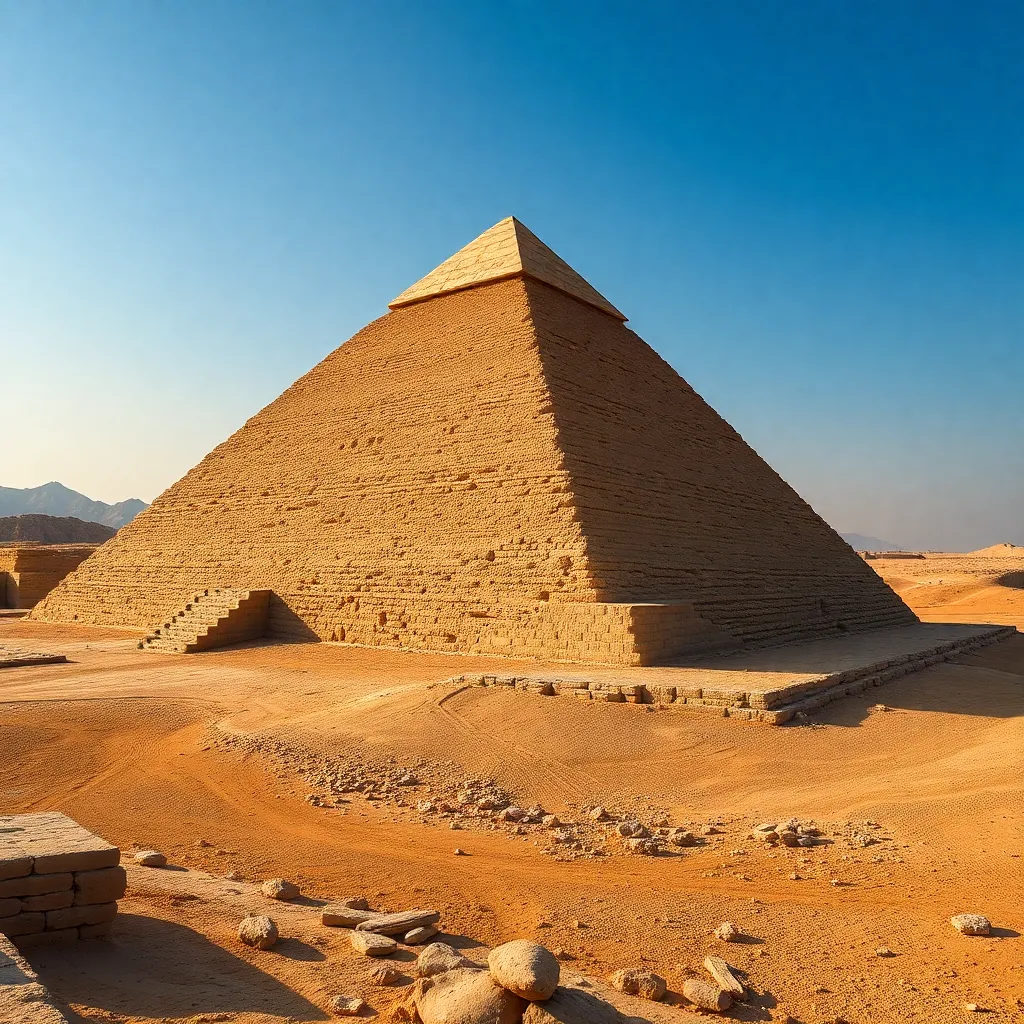The Pyramid of Sneferu: The Birth of the True Pyramid
I. Introduction
The Pyramid of Sneferu stands as a monumental testament to the ingenuity and architectural prowess of ancient Egypt. As one of the most significant structures built during the Fourth Dynasty, it marks a critical turning point in the evolution of pyramid construction. The innovations introduced by Sneferu not only set the stage for future pyramids but also reflect the cultural and religious practices of the time.
II. Historical Context
A. The reign of Sneferu: background and achievements
Sneferu, the first king of the Fourth Dynasty, ruled during a period of remarkable development in ancient Egypt, approximately from 2613 to 2589 BCE. He is credited with several notable achievements:
- Initiating extensive building projects, including the construction of his own pyramids.
- Consolidating power and improving the administrative structure of the state.
- Enhancing trade and diplomatic relations with neighboring regions.
B. The political and cultural landscape of Ancient Egypt during the Fourth Dynasty
The Fourth Dynasty is often described as the golden age of pyramid construction. During this time, the political landscape was characterized by strong centralized authority, and the Pharaoh was viewed as a divine ruler. Culturally, there was a significant emphasis on the afterlife, which was reflected in the monumental architecture dedicated to burial practices.
III. Architectural Innovations
A. Transition from step pyramids to true pyramids
The Pyramid of Sneferu represents a pivotal shift from the earlier step pyramids to the more refined true pyramids. This evolution was marked by a greater understanding of geometry and construction techniques, allowing for the development of a more stable and aesthetically pleasing structure.
B. Key design features of the Pyramid of Sneferu: Bent Pyramid and Red Pyramid
Sneferu’s ambitious building projects included two significant pyramids: the Bent Pyramid and the Red Pyramid, each showcasing distinct architectural features and innovations.
IV. The Bent Pyramid: A Unique Design
A. Description and construction of the Bent Pyramid
The Bent Pyramid, located at Dahshur, is renowned for its unique shape. It stands at approximately 105 meters tall and was constructed with an initial angle of 54 degrees, which was later altered to 43 degrees. This change in angle gives the pyramid its distinctive bent appearance.
B. Theories regarding its unusual shape and design choices
Several theories have been proposed regarding the Bent Pyramid’s unusual design:
- It may have been a result of engineering challenges encountered during construction.
- Some scholars suggest it was an intentional design to symbolize the rays of the sun.
- Others believe it was a transitional design that reflected experimentation with pyramid shapes.
V. The Red Pyramid: A Masterpiece
A. Characteristics and construction of the Red Pyramid
The Red Pyramid, also located at Dahshur, is considered Egypt’s first true pyramid. It was named for the reddish hue of its limestone blocks. Standing at about 104 meters tall, it is characterized by its smooth, straight sides and near-perfect symmetry.
B. Comparison with other pyramids of the era
Unlike the Bent Pyramid, the Red Pyramid showcases a successful implementation of the true pyramid design. It served as a model for later constructions, including the famous pyramids at Giza. Its architectural achievements include:
- Improved structural integrity.
- Utilization of a more refined building technique that resulted in smoother faces.
VI. Engineering Techniques
A. Materials and methods used in construction
The construction of the Pyramid of Sneferu involved the use of local limestone and granite. The builders employed advanced techniques such as:
- Careful planning and surveying to ensure precision.
- Innovative labor organization to manage large workforces.
B. Advancements in engineering that emerged from the Pyramid of Sneferu
The engineering techniques developed during the construction of Sneferu’s pyramids laid the groundwork for future architectural innovations in ancient Egypt. The understanding of load distribution, material utilization, and structural design significantly advanced during this period.
VII. Cultural Significance
A. The role of pyramids in Egyptian religion and burial practices
Pyramids served not only as tombs but also as monumental statements of the Pharaoh’s divine status. They were designed to facilitate the journey to the afterlife, embodying the Egyptian belief in immortality.
B. Sneferu’s legacy and its influence on subsequent pyramid construction
Sneferu’s innovations greatly influenced subsequent Pharaohs, including his son Khufu, who built the Great Pyramid of Giza. The architectural principles established by Sneferu became the standard for pyramid construction throughout the rest of the Old Kingdom and beyond.
VIII. Conclusion
In summary, the Pyramid of Sneferu represents a monumental milestone in the history of ancient Egyptian architecture. Its unique designs, engineering advancements, and cultural significance mark it as a pivotal structure that shaped the future of pyramid construction. The legacy of Sneferu continues to resonate, highlighting the enduring impact of ancient Egyptian civilization on architecture and culture across the world.




